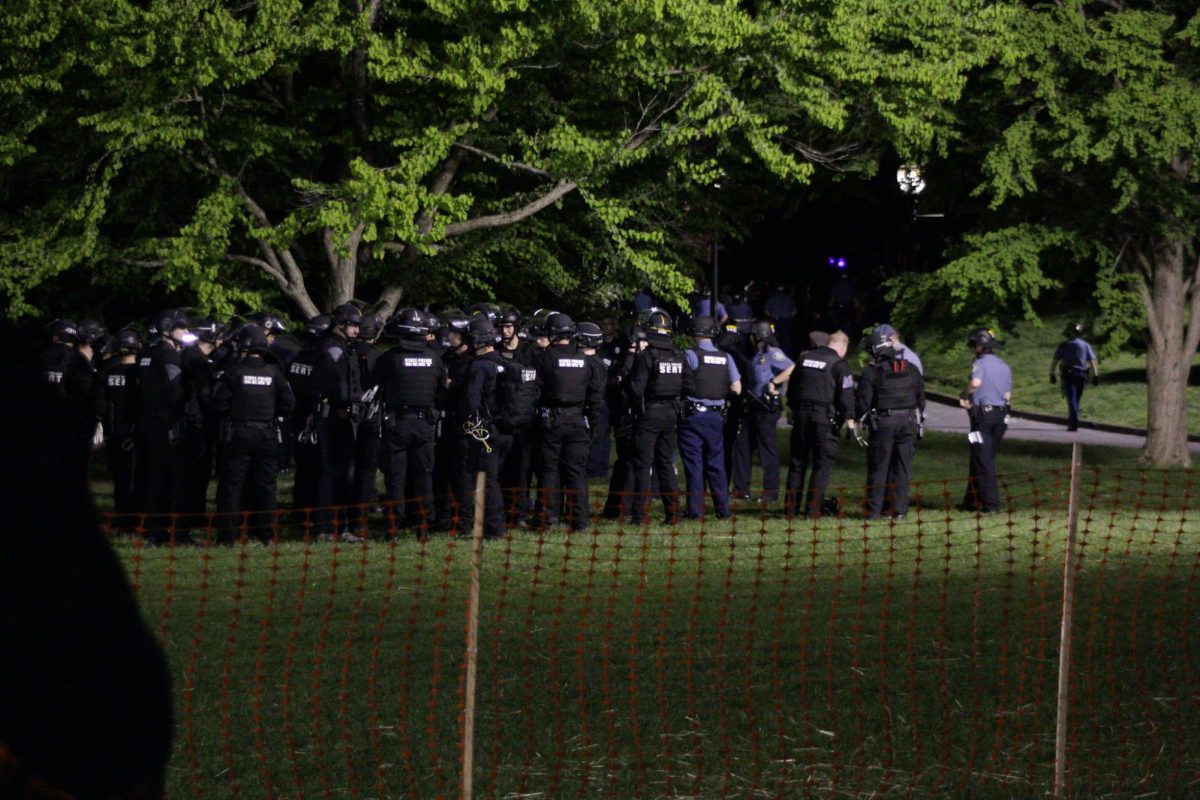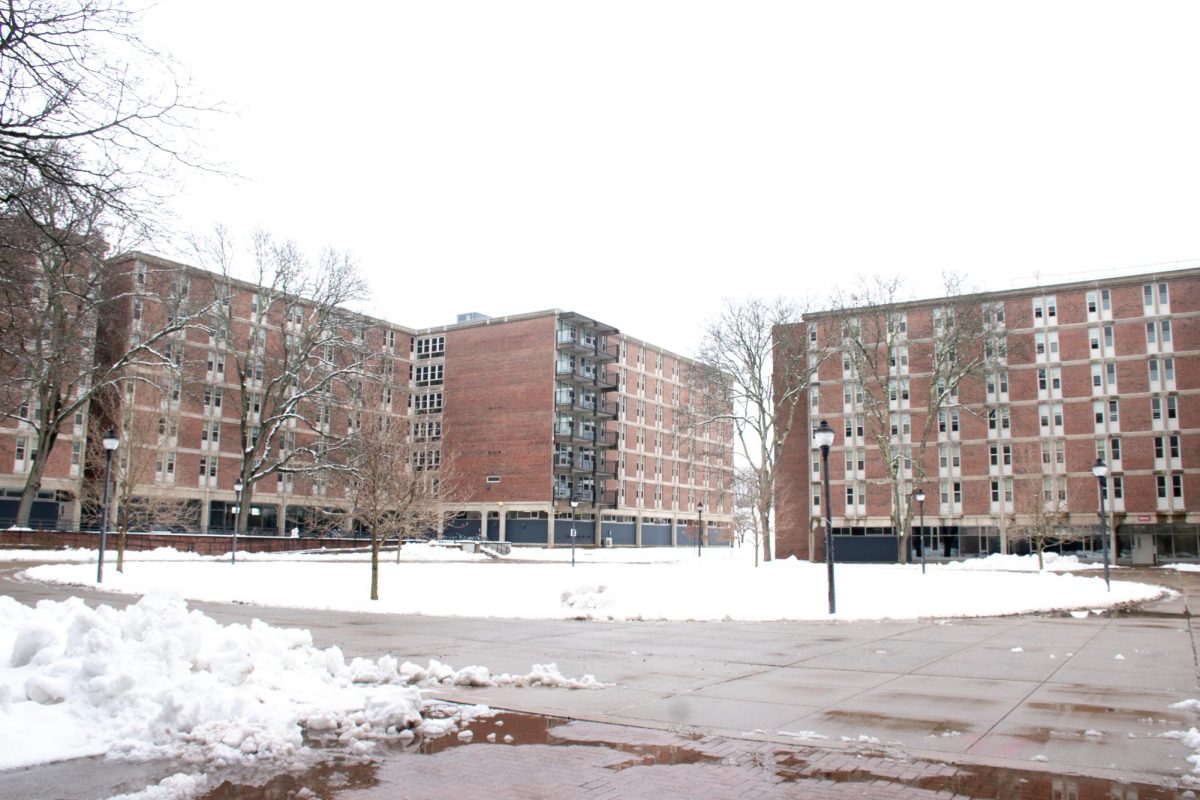
I returned to the University of Massachusetts a little early this year. As part of Residential Life staff training, I had to return to campus two weeks before the start of semester. During this time, I saw many of my favorite campus locations operating at limited capacity. This was understandable, since many campus businesses and facilities rely heavily on student workers, so it was expected that there would be reduced functionality before the official start of semester.
Roots Café was open, but didn’t sell all of their items. The dining halls were open, but at reduced hours. The recreation center was open, but on a tighter schedule. Most strikingly, I noticed that of the three squat platforms we used to have, one of them appeared to be under repair. Assuming that this was a temporary situation due to summer repairs, I’d proceed with my workouts and simply avoid the broken rack. After all, before the semester started, there were very few people in the gym at a given time, so it wasn’t a big problem to simply use one of the other two racks.
It’s been slightly more than two months since then, and the middle rack at the rec center is still blocked off. Now, however, people are using the facilities on a regular basis, and keeping the squat rack out of service is starting to become problematic.
Sure, there are times when the rec center isn’t very crowded. At those times, the other two squat racks are free to anyone who needs them. However, for people whose workouts require squats or deadlifts three times a week, the current reliance on only two rack platforms makes it nearly impossible to properly train. Generally, this means that the racks are only accessible to those who are lifting in a group, making it more inaccessible for novices who are trying to get into fitness.
But beyond being an inconvenience, this setup also makes the gym less safe. When it’s particularly packed, people tend to overcrowd the platforms. On Monday nights, it’s not uncommon to see the two functional platforms loaded up with three sets of people each. That is, one person squatting, and two people at the deadlift platform for each of the two racks. In situations like this, the increased crowdedness and close proximity add an additional risk.
I personally have been in situations where I’ve had to triple up like this, and as a result have ended up having a few close calls. When I was deadlifting, the person right behind me was performing dynamic Olympic lifts, which can involve swinging around heavy weights and potentially dropping them from high up. While they took precautions to make sure their bar would never come in contact with me, it wouldn’t have been hard to get hit if I stumbled over my laces or simply stepped backward at the wrong time. When people are performing dynamic lifts with heavy weights, this has the real potential to seriously injure someone, posing a direct safety concern to people using the rec center facilities. As much as we can personally try to be safe, there is an inherent increased risk to lifting when in close proximity to others. This is a direct consequence of the fact that the middle rack is still closed, which causes people to triple up on the remaining racks.
What baffles me most is the fact that, even though the middle rack is missing its deadlift platform, the squat rack component is still intact. Ostensibly, the rec center could at least add a bar to the middle rack, allowing one extra person to perform squats and thereby alleviating part of the traffic load. The rec center has entire areas dedicated only to cardio machines which are rarely filled to maximum capacity. Yet, although the lifting platforms are filled beyond their capacity, the rec center hasn’t seemed to make it a top priority to alleviate this demand. Even ignoring the safety concerns, it makes little sense from an efficiency perspective to have so few sets of one of the gym’s most popular pieces of exercise equipment.
There are, of course, some official reasons for why the rack hasn’t been fixed. Issues such as maintenance timing and cost played an important role in getting us to where we are now. And in fact, within the past week, there have been signs posted in the rec center explaining that the rack will soon be repaired. This is a step forward, but it still doesn’t change the fact that for more than two months, the racks were kept in a state that increased safety risks and caused problems with overcrowding.
The rec center provides an amazing wealth of workout facilities and equipment for people who want to maintain their physical health. It’s been one of my favorite places on campus. Yet, the fact that the problems related to this rack have been left alone for months signifies that the rec center could be doing more in terms of safety and efficiency. If the rec center takes these issues seriously, they could invest in another rack (or more!) to further alleviate these problems. And quite frankly, it would be nice. At a school with over 21,000 undergraduate students, we should have a few more sets of our most frequently-used pieces of equipment.
Edridge D’Souza is a Collegian columnist and can be reached at [email protected].



















Paul • Nov 8, 2017 at 12:57 pm
Do you even lift, bro?
Richard • Nov 8, 2017 at 6:39 am
Funny that you posed this the day it was fixed. Try not to talk about things you have limited information on next time, or at least consult someone who might be ‘in the know’.
Sam • Nov 7, 2017 at 2:46 pm
Another safety concern… many of the showers in the ladies locker room have lights that are out, leaving very dimly lit showers. It’s been this way for months now. Something as simple as changing a light bulb should be addressed immediately and not left for weeks or months.